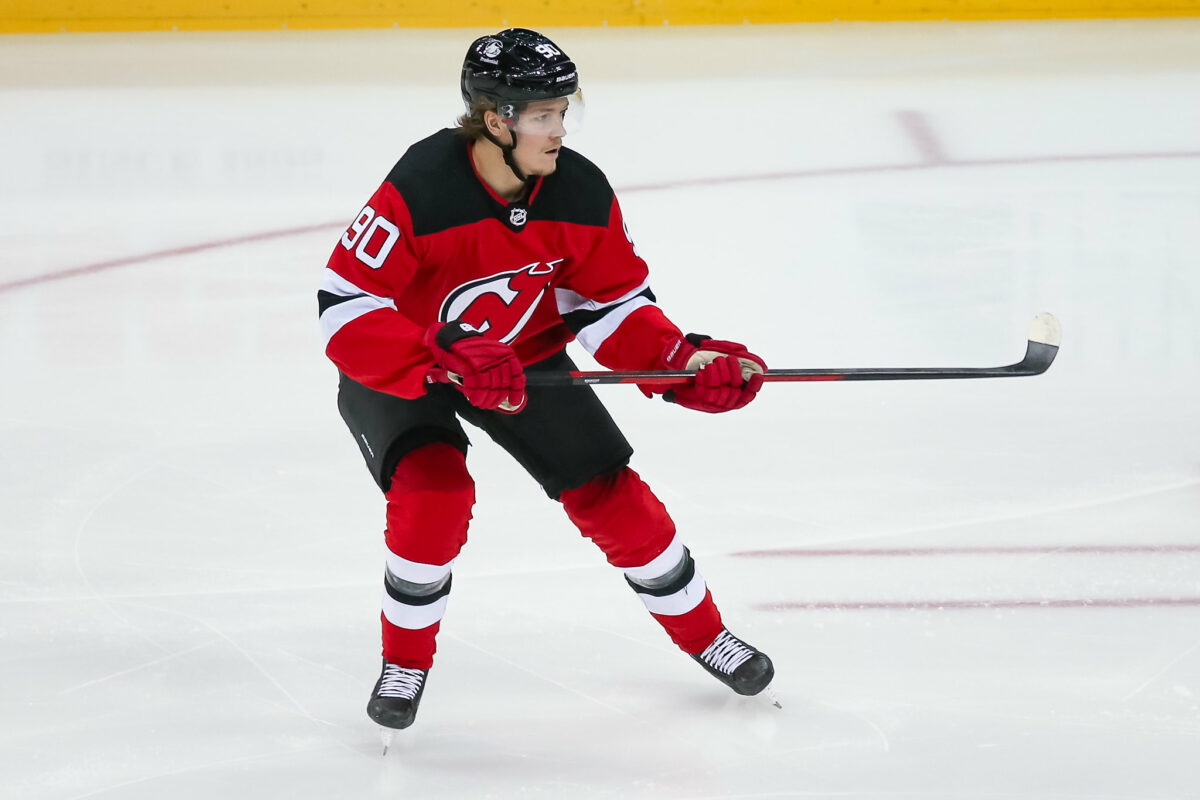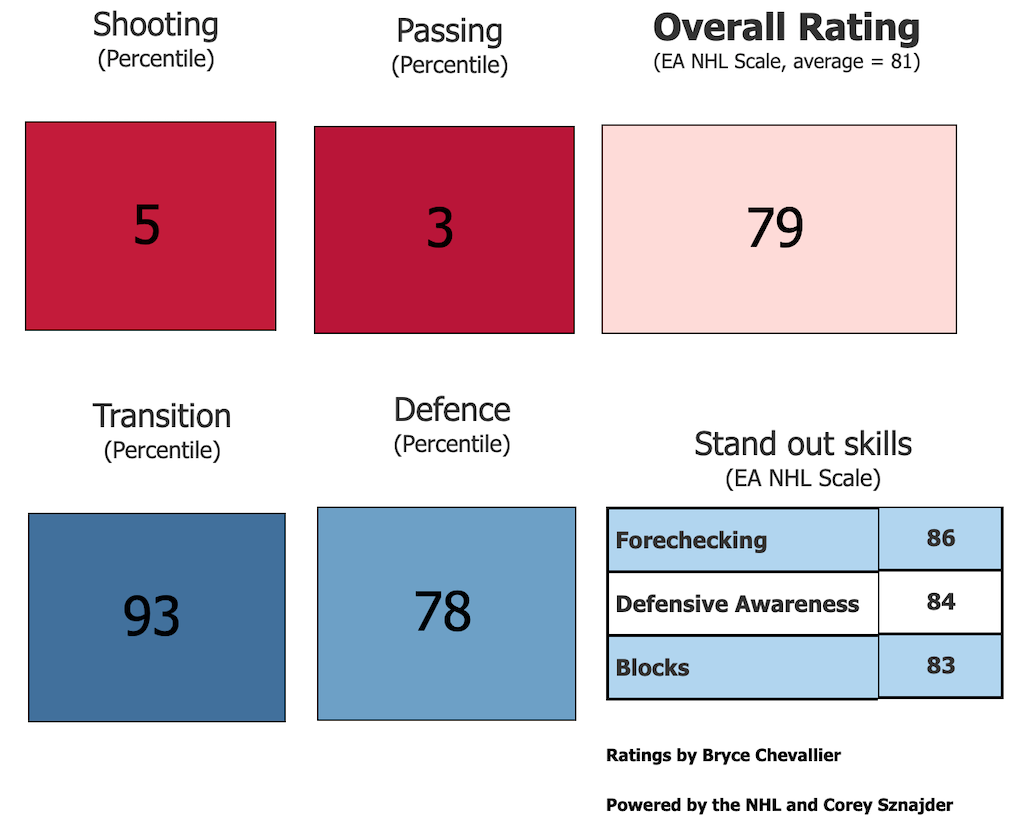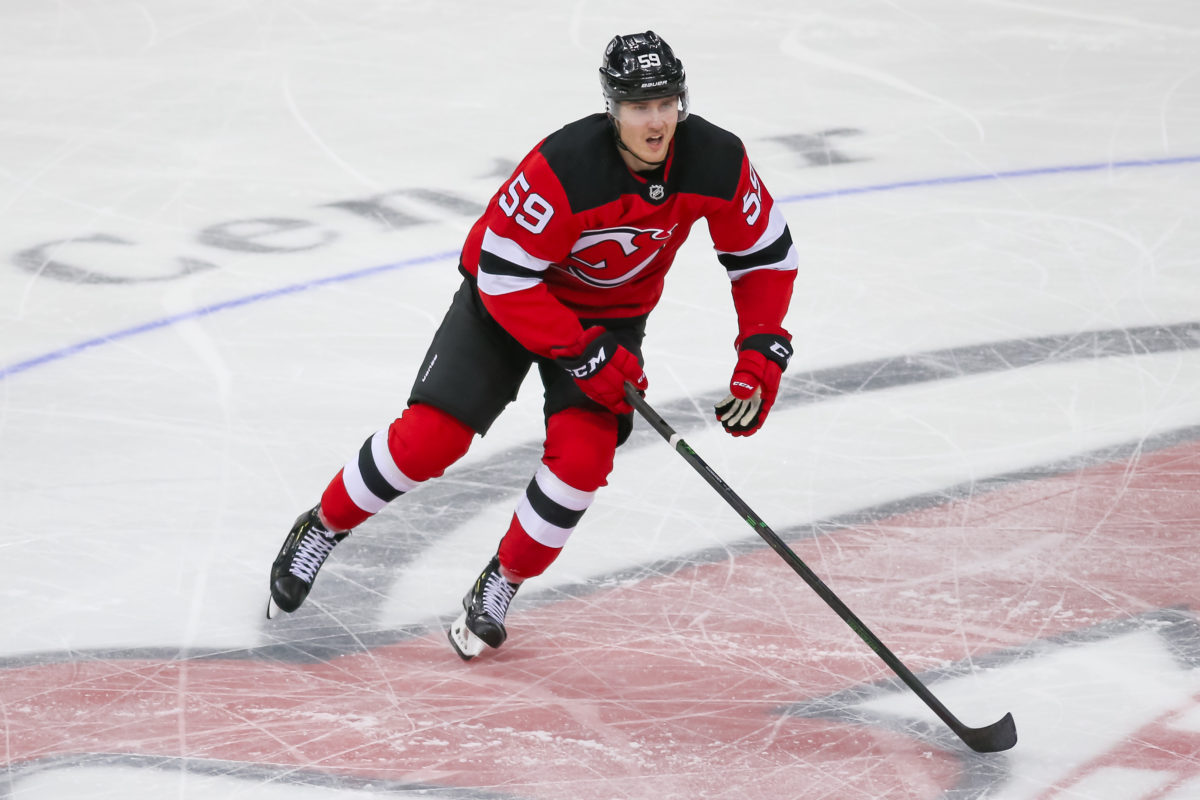The New Jersey Devils had maybe the most active offseason of any NHL team. They signed Dougie Hamilton to a seven-year, $63 million deal and acquired Ryan Graves to improve their defense. They shored up their goaltending by signing Jonathan Bernier and added a top-six winger in Tomas Tatar. But even with all their additions, there’s still room for the team’s youth to earn spots on their NHL roster.
One player in a prime position to make the team out of camp is Jesper Boqvist. It’ll be a crucial year for the soon-to-be 23-year-old forward, who’s struggled in the NHL so far. The Devils have a vacancy to fill as their third-line center, and it’s there for the taking for Boqvist. He showed some promise down the middle over the final month of last season. Now, he’ll have to seize the opportunity not only for the Devils but also for his potential future with the club.
It Can Still Click for Boqvist
Boqvist quickly became one of the Devils’ top prospects after they selected him in the second round of the 2017 Draft. After returning from an injury he suffered at the beginning of the 2017-18 campaign, he finished with 13 points in 23 games for Brynäs IF in the SHL in his draft+1 season. He returned healthy for 2018-19 and totaled 35 points in 51 games for Brynäs, making him one of the top U-21 scorers in the league.
The Devils would sign Boqvist to his entry-level deal in the summer of 2019. He’d begin his NHL career the following season, but the 2019-20 campaign was a struggle for him. He’d total only four goals and no assists in 34 games, and his on-ice results were also poor, as he finished with a Corsi for percentage (CF%) of 45.3 percent and expected goals percentage (xG%) of 39.7 percent. The Devils would send him down to the AHL, where he’d finish with 11 points in 19 games before the COVID pandemic shut down everything.
Related: Devils Still Reaping Dividends From Shero Trades
Granted, it didn’t help that Boqvist’s most common linemates in 2019-20 were John Hayden and Kevin Rooney. But for what it’s worth, his on-ice stats were much better when he saw ice time with more skilled players. For example, the trio of Boqvist, Nico Hischier and Kyle Palmieri had a CF% of 59.97 percent and xG% of 52.1 percent. Boqvist also had a CF% of 57 percent and xG% of 49.8 percent in 60 minutes with Jack Hughes. So the results were better when he played with players closer to his skill level, even though they were in small sample sizes.

With a new head coach in Lindy Ruff taking over, the 2020-21 season marked a fresh start for Boqvist. He’d make the team out of camp, but it was still a struggle for him to find his footing in the NHL. He finished with seven points in 28 games and added seven points in eight AHL games.
Boqvist’s on-ice results were strong early in the season when paired with Travis Zajac and Miles Wood, but that combo couldn’t stick long-term. Otherwise, they resembled closer to his 2019-20 stats, as he finished with a CF% of 45.2 percent and xG% of 41.6 percent. With that said, I think there are reasons to be optimistic he can figure it out.
Boqvist has produced at every level of hockey he’s played in other than the NHL. He had 10 points in 13 games in the HockeyAllsvenskan while on loan there before the 2020-21 NHL season began. He was almost a point-per-game player in the AHL last season and looked more comfortable playing center for the Binghamton Devils. While the production wasn’t there at center in the NHL when he got a look there, his game seems better suited for the position. But he’ll need to have better linemates next season for a chance to break out.
Boqvist Belongs at Center and With Skilled Wingers
For a majority of Boqvist’s brief NHL career, he’s spent time alongside bottom-six forwards. Part of that is on him. He hasn’t played particularly well, and there are things he needs to work on, such as becoming a more aggressive shooter and consistent goal-scoring threat. Via Architecte Hockey, Boqvist ranks in the fifth percentile in shooting and third percentile in passing. On the flip side, he’s defended well and has excelled in transition, which further builds a case for him playing center if he can unlock his offensive potential.

To take that step forward offensively at center, Boqvist will need to play with some skilled wingers. As mentioned, Hayden and Rooney were his most common linemates in 2019-20. This past season, his most common linemates were Andreas Johnsson and Nick Merkley. After them, it was some combination of Wood, Zajac, Mikhail Maltsev and Michael McLeod.
It’ll be hard for a player like Boqvist to thrive offensively with Wood or McLeod. However, Johnsson could be a good fit for him on the wing. He’s a prime candidate to have a bounce-back season and has a history of producing at a 20-goal pace. He and Boqvist also had decent results together this past season. They had an xG% 56.1 percent and controlled over 52 percent of grade-B chances and 53 percent of grade-A chances, though only in a sample size of 84 minutes.
If Johnsson and Boqvist make up two-thirds of what would be the third line, rounding it out with Janne Kuokkanen makes a fair bit of sense. He looked quite impressive alongside Hughes and Yegor Sharangovich on the first line over the final four to five weeks of last season. It wouldn’t be a surprise if Ruff gave that trio another look. But if Kuokkanen moves down the lineup due to Tatar joining the fray, he’s the perfect winger to have in a third-line role. He was the team’s fifth-most efficient five-on-five scorer last season and is a standout playmaker. He can play either wing, so playing him on the right side shouldn’t be an issue.

If Kuokkanen sticks on the top line and it bumps down Pavel Zacha into a middle-six winger role, he’d make sense as a fit with Boqvist, along with Johnsson on the right side. Zacha had a breakout season in 2020-21 and was on pace for 26 goals and 57 points over 82 games, with his best performances coming on the wing. His shooting and offensive skillset would probably benefit Boqvist, with Johnsson adding some two-way ability on the other wing.
Boqvist has to earn his spot as a third-line center. He’s shown some flashes, but he’ll need to start becoming more of an offensive facilitator and scoring threat. At the same time, Ruff needs to put him in a position to succeed. Playing with linemates like Johnsson and Kuokkanen or Zacha should help Boqvist find his offensive game at center. Progress isn’t always a straight line, and he’s a perfect example of that. But if he doesn’t show he can produce with other skilled forwards, he could quickly get jumped by one of the young prospects the Devils will have with the Utica Comets — their new AHL affiliate — to start 2021-22. And with him turning 23 years old in October, now is the time to make a leap forward.
* * *
Advanced stats from Natural Stat Trick